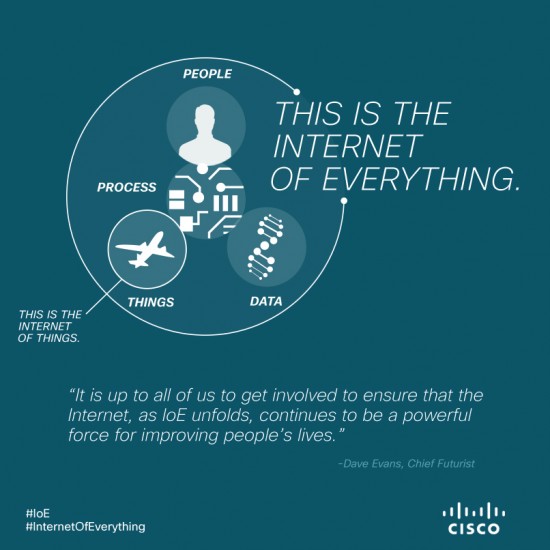Since Cisco began discussing the Internet of Everything (IoE) last year, two questions have arisen consistently:
1) What is the difference between IoE and the Internet of Things (IoT)?
According to Cisco, IoE brings together people (humans), process (manages the way people, data, and things work together), data (rich information), and things (inanimate objects and devices) to make networked connections more relevant and valuable than ever before—turning information into actions that create new capabilities, richer experiences, and unprecedented economic opportunity for businesses, individuals, and countries.
To better understand this definition, it is helpful to take a quick look at the evolution of the Internet. In the early 1990s, devices connected to the Internet were essentially “fixed.” For example, you went to your desk to use your PC, dumb terminal, or other device. At its peak, this first wave reached about 200 million devices by the late 1990s.
Around the year 2000, devices started to come with you. Remember lugging around your first “brick” mobile phone? As the number of both fixed and mobile devices (including machines) ballooned, the number of things connected to the Internet increased, reaching about 10 billion this year. This wave of Internet growth ushered in IoT, or as I sometimes call it, the “Age of the Device.”
Cisco believes the third wave of Internet growth has already begun. As the things connected to the Internet are joined by people and more intelligent data (as Cisco’s definition describes), IoE could potentially connect 50 billion people, data, and things by 2020.
So, what is the difference between IoT and IoE? Continue reading “Answering the Two Most-Asked Questions About the Internet of Everything #IoE”



CONNECT WITH US